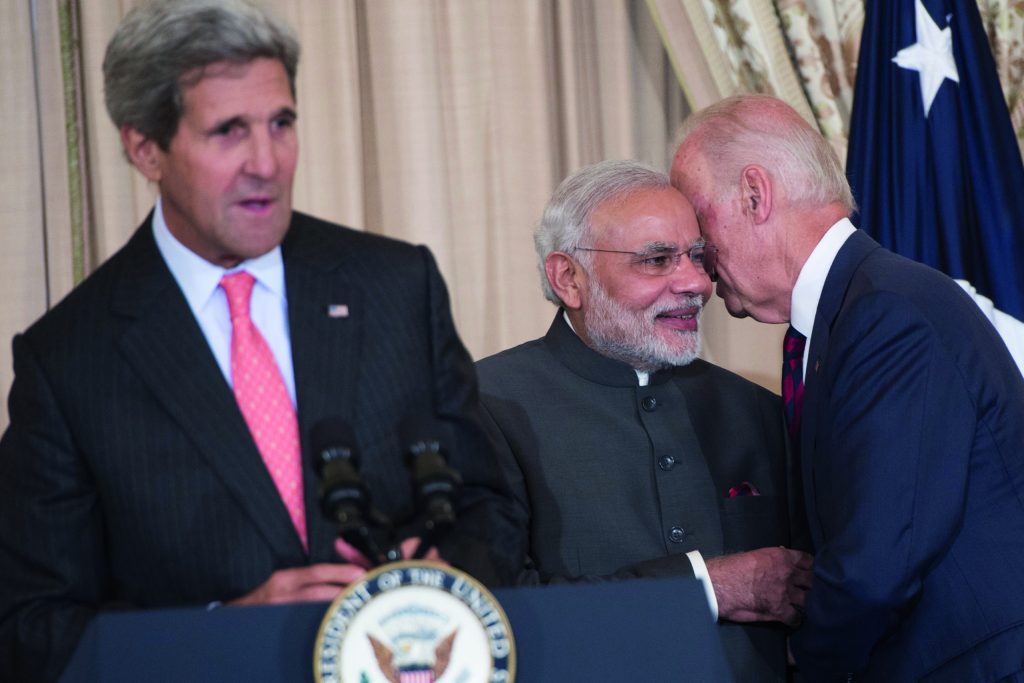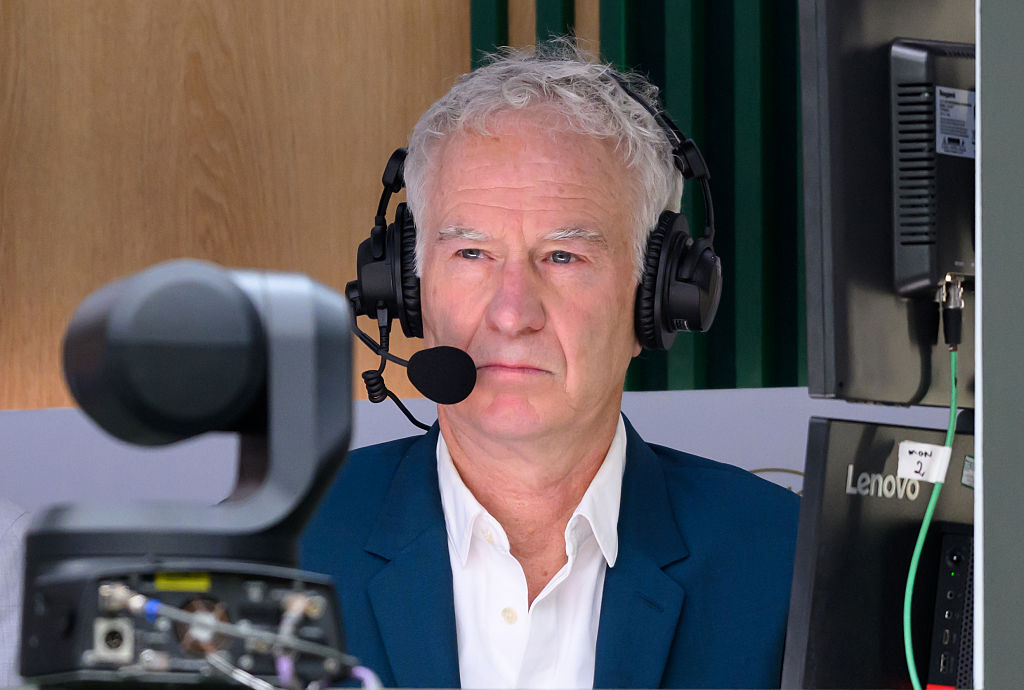Is Tony Blinken, President Biden’s secretary of state, preparing to abandon Barack Obama’s powder-puff Asian foreign policies? It is now widely agreed that Obama, under whom Blinken served as deputy secretary of state, ceded to China uncontested control of the South China Sea. Obama’s so-called ‘pivot to Asia’ was all talk and no trousers. Blinken, who believes that diplomacy must be ‘supplemented by deterrence’, may be about to implement a more aggressive foreign policy in Southeast Asia and elsewhere.
Xi Jinping has made his intentions clear. In 2012, in his first speech as general secretary of the Communist party, Xi stated his commitment to ‘accepting the baton of history and continuing to work for realizing the great revival of the Chinese nation in order to let the Chinese nation stand more firmly and powerfully among all nations. Xi’s international adventurism, under the umbrella of his ‘Belt and Road’ initiative, has been most evident in his illegal military occupation of the South China Sea, but it is a global strategy for domination whose tentacles can be observed in Central Asia, the Indian Ocean, the Middle East, Europe, even the Arctic.
How did Obama respond? He did nothing. He issued platitudes. He vacillated over whether the Mutual Defense Treaty with the Philippines included the disputed South China Sea. By the end of his presidency, it was too late. And weakness in the South China Sea was undoubtedly an invitation for Xi to push elsewhere on Obama’s open door.
Neither did Trump stem the geopolitical red tide. Arguably Trump’s focus on China’s mercantilism rather than its geopolitical expansion was misguided. In spite of secretary of state Mike Pompeo’s vigorous China-Russia containment policy, Trump’s America-first stance and his personal toxicity made any formal coalition to contain China a non-starter.
In Southeast Asia, while Trump was warmly embraced by President Rodrigo Duterte, a fellow scourge of the political establishment, the Philippines continued to kowtow to China. Duterte’s conclusion that ‘America has lost’ still holds. Meanwhile Thailand continued to fall under the thrall of Chinese economic power. Like Burma before February’s coup, Thailand’s ruling elite installed a ‘fake democracy’. In Asia and elsewhere — look at the rise of Erdogan in Turkey — the Chinese political model is now preferred to the increasingly sclerotic democratic systems of the West. Can this catastrophic loss of America’s global influence be reversed?
There are already indications that the Biden administration will seek to construct alliances in Europe and Asia to contain the Chinese and Russian threats. As a former deputy secretary of state, Blinken has long been President Biden’s point man on Europe and is known to be a long-time confidant. For an avowed Europhile and ‘multilateralist’ who speaks fluent French after years living in France, getting Europe onside will be important.
With Biden’s election victory there was apprehension that a combination of a Europhile secretary of state and a president with Irish roots would disadvantage the UK. It was a fear dispelled when Biden’s first call to Europe was to Boris Johnson. ‘First calls’ are not haphazard events; the State Department wargames these minutiae. Blinken may be a Europhile rather than an Anglophile but he is not blinkered. ‘The Atlantic Alliance is showing serious cracks,’ he wrote in 1987. ‘Republicans and Democrats alike are tired of seeing the US devote almost one half of its defense budget to Nato and receive little more than complaints in return.’ Plus ça change.
The British Prime Minister Boris Johnson has been floating the idea of a ‘D10’ group: the G7 plus India, South Korea and Australia. Having finally decided to ditch Huawei, and perhaps persuaded by China’s crackdown on democracy in Hong Kong, the UK has thrown its hat into the ‘stop China’ camp. D10 is a grouping that has some logic. By comparison Nato is undermined by the continuing membership of Turkey, a country now closely aligned with China. Even France’s President Emmanuel Macron last year described Nato as ‘brain dead’. The question is whether the mooted D10 is a credible base for an anti-Chinese containment strategy.
A containment strategy needs real military power. Apart from the UK and France, the other European nations are largely window dressing. Some years ago, an Italian defense minister admitted that his country would be stretched to send even 5,000 troops overseas. Moreover, for the long-term, a reversal of Europe’s feeble economic performance is just as important as raising its military capability.
And here the real problem is Germany, a near-pointless military partner. It spends so little on its military that in 2014 Germany’s then-minister of defense Ursula von der Leyen (yes, she of the EU’s vaccine cockup) sent her troops out on Nato exercises carrying broomsticks. Furthermore, Germany’s foreign policy is compromised by its trade deals. Their recently completed deal with China cannot have pleased the Biden administration.
Blinken, who in 1987 wrote Ally vs Ally:America, Europe and the Siberian Pipeline Crisis, is unlikely to be a fan of Russian gas pipelines to Germany. It remains to be seen whether Biden will continue to levy the Trump sanctions on the European companies involved in Nord Stream 2. Furthermore, Germany’s mercantilist policies — its current account surplus is over seven percent of GDP — combined with a dysfunctional monetary union also hold back Europe’s economic potential.
In Asia the task of forming a containing alliance is equally daunting. Although Japan, South Korea, Taiwan and distant Australia appear to be reliable partners in the South China Sea, the position in Southeast Asia is much more problematic. Since their expulsion from their naval base at Subic Bay in the Philippines in 1992, the US has had a much reduced presence in Singapore, although an extension of the defense pact, signed by President Trump in 2019, will continue until 2035.
Blinken has already spoken to the Philippines’ foreign secretary, declaring that China’s occupation of the South China Sea is illegal under the UN’s 1982 Law of the Sea (Unclos) protocols. More importantly, Blinken asserted the importance of the Mutual Defense Treaty for the security of both nations, and its clear relevance to armed attacks against Philippine armed forces, public vessels, or aircraft in the Pacific, which includes the South China Sea.’ Fighting talk, but is it just huff and puff?
One suspects that neither Biden nor Blinken has the cojones to initiate armed conflict to contest China’s already established military control of the South China Sea. The old adage that possession is nine-tenths of the law has never been truer. Regional players such as Vietnam and the Philippines, albeit wary of China, with whom they have reached an accommodation, are unlikely to throw that over in favor of a US whose commitment to the region has flip-flopped.
If Southeast Asia is lost, what next? China has already moved on to securing control of the Bay of Bengal, the Indian Ocean and trade routes to the Suez Canal. Thailand has been turned. Burma is in China’s pocket. Meanwhile Bangladesh, a fast-growing country of 165 million people where in 2016 Xi Jinping made the first state visit by a Chinese leader in 30 years, is being increasingly suborned by Chinese infrastructure investment and armaments. In its southern reaches, where the Bay of Bengal meets the Indian Ocean, China is already well entrenched. And in 2018, China negotiated a 99-year lease for Sri Lanka’s Hambantota port and 15,000 adjacent acres — just some 40 miles off the coast of India.
There’s the rub. China’s Southeast Asia strategy is to contain India, the country it sees as its long-term geopolitical rival. Although India lags a distant third to America and China in terms of aggregate GDP (measured in purchasing power parity, or PPP) it is also likely to overtake the US within 20 to 30 years. India already ranks fourth in the world in terms of aggregate military power.
As the world’s largest democracies, the United States and India should always be the best of friends. Yet US-Indian relations have rarely worked well. India’s first prime minister, Jawaharlal Nehru, rebuffed President Eisenhower; Nehru’s meeting with President Kennedy was a car crash. (Kennedy later admitted that it was ‘the worst head of state visit I have had’.) The neo-Marxist Indira Gandhi pocketed aid money from President Johnson, then criticized him viciously for his involvement in Vietnam. Henry Kissinger described Mrs Gandhi’s meeting with President Nixon as a ‘dialogue of the deaf’; even the normally polite Kissinger described her as ‘a bitch’.
Relations between American and Indian heads of states have improved, but their substance has not. Obama liked Manmohan Singh, the technocrat prime minister and front man for the Gandhi-family-controlled Congress party. However, judging from Obama’s autobiography they do not seem to have discussed much more than ‘progressive politics’. As for Prime Minister Narendra Modi, the ultra-nationalist Hindu head of the BJP, he is, like Trump, a populist with a cult following. However, in spite of the mood music at their early 2020 meeting, little was achieved. A mooted trade deal failed. Biden may well court Modi too. Noticeably Blinken, like Trump, refers to Asia as ‘the Indo-Pacific’ — a term that the Chinese government detests.
While the geopolitical interests of America and India are clearly in alignment, bringing them into a more formal arrangement may be difficult. India is proudly independent. It does things its own way. In the post-war period, at least until 1990, India operated an autarkic neo-Marxist economy that was much closer to the Soviet Union than the West. Remnants of that and India’s prickly relationship with the West remain.
While India — currently engaged in border skirmishes with China in the remote Himalayas, most recently this year in Sikkim state — is fully aware of the Chinese threat, it may be difficult to lasso the country into a formal mutual defense relationship. The D10 is one of those neat ideas that might look good in a State Department or Foreign Office briefing but, given the difficulties of co-opting India and Germany, can it cut the mustard in the real world?
Francis Pike worked in Asia for many years and is the author of Empires at War: A Short History of Modern Asia Since World War Two. This article was originally published in The Spectator’s March 2021 US edition.

























